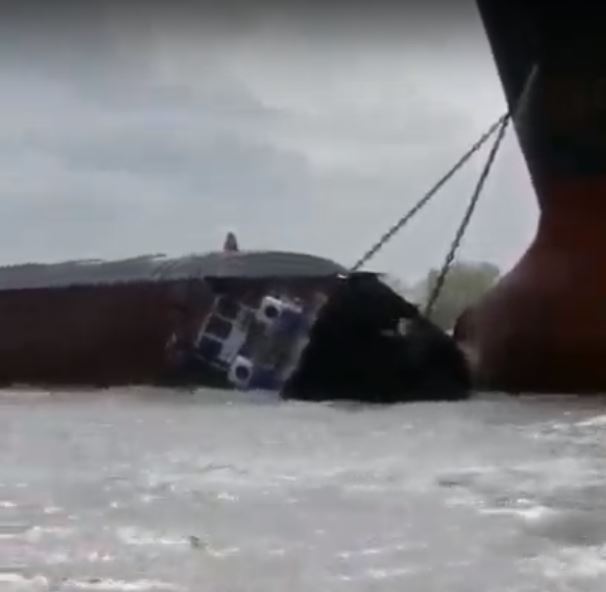The U.S. Coast Guard reopened the Mississippi River from mile marker 224.5 to mile marker 226 after a vessel sank near Baton Rouge, La., Thursday. General anchorage remains closed.
A Coast Guard Marine Safety Unit Baton Rouge incident management team confirmed an oil sheen in the water. There is a reported potential of 18,500 gals. of fuel aboard the 65'x24' towboat Michelle Anne. An unknown amount of oil has discharged into the river.
Due to concerns over responder safety from dangerous river conditions the Coast Guard and OMI Environmental are managing the spill from shore.
Coast Guard Sector New Orleans watchstanders received a report at 11 a.m. Thursday of the 1,200-hp towing vessel Michelle Anne, pushing one empty dry cargo barge with four crewmembers, sinking at Baton Rouge General Anchorage.
The four crewmembers escaped to the barge and were recovered by a nearby tug. There were no reported injuries. The barge was recovered as well. Bystander videos posted on social media and by television station WBRZ showed the Michelle Ann pinned against the anchor chain of the 738'x106' bulk carrier Iolcos Unity, listing to port with one of its twin propellers out of the water and still turning. The cause of the incident is under investigation.
Farther north on the Missouri River, the Coast Guard issued a waterway closure to all vessel traffic on the river from mile marker 450 near St. Joseph, Mo., to mile marker 550 approximately 50 miles south of Omaha, Neb., due to high water levels and dangerous currents, Friday.
The Coast Guard and Army Corps of Engineers are requesting all operators create as minimal a wake as possible between mile marker 375 near Kansas City, Mo., to mile marker 450 near St. Joseph, Mo., on the Missouri River to minimize levee damage.
Restrictions to operations will be lifted as soon as conditions improve.
“The safety of the maritime public is the Coast Guard’s top priority,” Lt. James Long, Coast Guard Sector Upper Mississippi River, the contingency planning and force readiness chief, said in a statement announcing the closure.
The Coast Guard captain of the port determines when to issue a river closure by following a waterways action plan, which provides the marine industry, Coast Guard, U.S. Army Corps of Engineers, and state and local governments with a coordinated plan for facilitating the safe and orderly movement of traffic during extreme conditions on the inland rivers.





